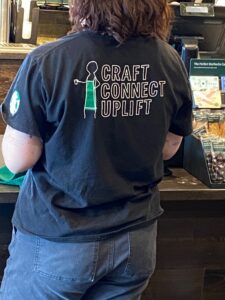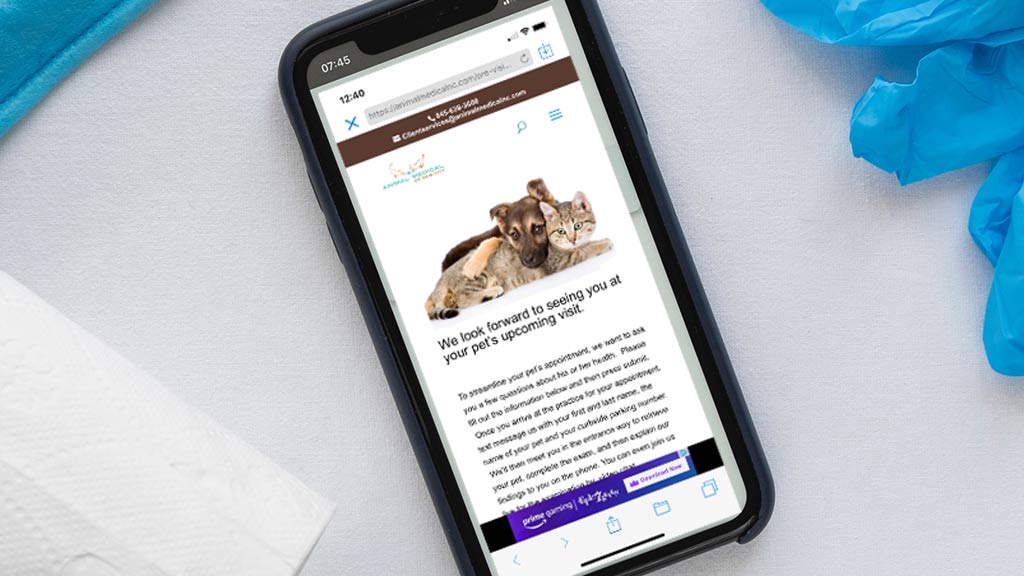Branding and a business’s identity are closely tied, but unlike your business’s identity, branding can change depending on your audience and your current business’s goals. Let’s discuss both identity and branding, then drill in specific ways you can better define each for your business.
What is Branding?
Branding is an outward expression of your business. It is the language, color, messaging, logos and the service techniques you use to best communicate your identity and your Unique Value Proposition. Done correctly, just experiencing your products or service is to know your business, to understand its value, and to understand what it is about.
Unique Value Proposition Exercise
Some companies choose to articulate their identity to the client as a Unique Value Proposition, that is to say, how your company answers consumer needs in a way that is both different and superior to your competitors. To help you articulate what makes you unique, try these four exercises.
Imagine talking to a specific person
Rather than thinking of your company as a solution to all people everywhere, try imagining a specific individual, someone whose needs, likes and dislikes are known to you. Now begin a list:
- What are the services you can offer that specific individual?
- How can you deliver those services in a way that you think will be particularly appealing to the individual?
- Which of your business values would this individual find most admirable?
This exercise will help you to find impactful, specific words and phrases to describe your Unique Value Proposition.
Think of common consumer (or pet!) issues and how your business solves them
It may seem silly to ask, but what do you think are the biggest concerns of most patients that come to your practice? “Who are these people? Am I in trouble? Is this going to hurt?” What about the pet owners? “Is this going to cost a lot of money? Does this young woman have enough experience? Will my pet be mad at me for bringing him here?” Determining the biggest worries or problems that your pet parents or pets are experiencing and how your business will solve those problems will help you alight on the parts of your client value proposition that are most impactful.
Explore the value of your values
Is honesty, transparency, a ‘fair deal’, a 100% money-back guarantee of satisfaction part of your business model? Strong principles matter to many consumers. Prospective clients may find it uplifting to do business with a hospital that knows and stands up for who it is. Write down the things that matter most to you as someone serving the public. Why is it important to you? Do you think that your customers would benefit from better understanding and how deeply you care about caring? How might you state the obvious without stating the obvious?
Difference between branding and identity
Your image may change over the years, but if it is grounded in a strong sense of identity, it will only change so much as you get better at understanding and describing it, not upending it as though you’ve switched personalities. Branding is like an affectation or signature pair of glasses that you wear to make a statement about who you are or what others can expect of you. Branding can change based on:
- Audience
- Sales goals
- Image goals
If identity is the heart, branding is the outward appearance of the business. A great example of branding versus identity can be found by reviewing how Heinz product labels changed based on time, market and product.
Heinz’ product design is iconic, but subtly changes from time-to-time based on the company’s sales goals and audience. Note the graphic of the pickle on the center product. This image was once used on all the products to remind the consumer that the same quality and value found in the company’s original jarred pickles could be found in their other dressings, soups, and relishes. Later, imagery on the can evolved to keep pace with changing consumer preferences for organic products and a nostalgia for old homestyle cooking. Note the vine ripened tomato on the ketchup bottle and the more retro look of the soup can.
To build a brand, start with your identity
In order to effectively communicate who you are to the world; you have to know who you are to the rest of the world. Most companies begin this exploration through a mission statement.
Many veterinary hospitals dutifully write mission statements, but never find them to be as transformational as they had hoped they would be. There are papers and real life stories that prove these hospitals are not alone. Mission statements by themselves do not a great company make, however there is a sizable amount of research that shows when leaders make operational and employee management decisions based on tenets in the mission, they work resoundingly well. That is to say mission statements really come alive, not when they are stated, but when they are acted upon, most importantly, internally. Here is more on that point:
Identity-driven employee management systems outperform
In a 1996 study cited in A Model of the Impact of Mission Statements on Firm Performance, it was found that organizations that aligned their structure, systems and procedures with tenets articulated in their mission statements had the most ‘powerful, positive, pervasive correlation with performance, especially with an improvement in employee behavior.’
Identity can inspire changes to operations
Whole Foods has a mission to source food locally and to promote sustainable farming. Consequently, they have developed the Community Giving initiative. Not only does it live up to the company’s mission, but it speaks to consumers’ current needs and provides the company with a competitive way to source its product. What kind of an impact do you think this outside-of-the-box thinking has on Whole Food’s supply chain? Its reputation in the community? Its visibility? In an age when some consumers are making drastic changes to their eating habits and life style based on sustainability, what does this move do to client loyalty? How do you presume this idea came about? Do you believe it was the brainchild of their CEO or a product of a brainstorming session in a management meeting? What jump-started the thinking process?
Mission statements are more likely to thrive when supported by leaders
In an article entitled, How Steve Jobs Saved Apple, the choice to make Steve Jobs the CEO is cited as a game-changing milestone in the company’s journey to world-wide dominance. With or without a mission statement, what is the impact of choosing a leader who deeply understands the company’s reason for being? Steve Jobs believed in Apple, was inspired by Apple, and most importantly could not stop thinking and talking about Apple. His endless ruminations about what Apple did and why it was great regularly inspired employee and consumer engagement.
A sense of identity can inspire competitive ways to train
Like Apple under the leadership of the late Jobs, Starbucks is constantly tinkering with defining its identity, its purpose, and its unique client proposition. Not too long ago, the company adopted 4 pillars of service:

Since this writing, Starbucks has tinkered with its pillars, they’ve reduced the four to just three, a great sign that the company continues to discuss and think about the what and why of their work.
-
- Anticipate
- Connect
- Personalize
- Own
Think about the employee training process at your practice. Lengthy, no? What if every training lesson at your practice were placed in the context of the Starbuck’s 4 pillars? Would that mean that you could both teach employees what to do and how to do it at the same time?
Exploring your hospital’s identity
- Professional one-on-one assistance customizing your wellness plan
- Local market analysis of your pricing (a 10K value!)
- Customized marketing help
- Integrates with your PMS
- Best of all, you don’t need to bill! You collect when services are rendered!
Mission Exercises
Take a picture
Here’s an exercise that can be completed in the hustle and bustle of any given day. Invite all your team members to take out their phones and photograph images of what they believe is your mission statement playing out in real time within your practice. Later, assemble all the pictures into a slide presentation, play it for the staff, and ask everyone what they believe they see. Write the ideas down and use the list as a source for a written statement.
Recall a great day at work
Recall the last time you had a really great day at work. Ask yourself why it was genuinely enjoyable. Dig beyond any snarky answers that your mind might jump at (nothing died, nothing went wrong for a change, everyone showed up. Etc.) Should your mission embrace and pursue these outcomes more regularly?
Pick a favorite staff member
Ask team members to identify an individual in the practice with whom they most enjoy working and why. See if there is a common thread of qualities or actions that all team members appreciate. Use this list to jump start ideas on what your business´s mission might be.
Create three lists
Have everyone make three lists about work:
- Everything that they are good at
- Everything that they enjoy doing
- Everything that gives them a sense of purpose.
Discourage self-editing during the process. Just write. Afterwards, look for common themes and jot them down. Chances are that these themes are at the heart of what everyone should be doing.
Use meditation to encourage ideation
Explore some of the guided meditations on YouTube. I find ones that walk you through finding a spirit guide or a higher power most helpful, but if you’re not a fan of the pseudoscience, just use them to help stimulate creative thinking and to regulate your breathing. Afterwards, think about the answers, visions, or ideas that came to mind.
Translating Identity into branding
The best companies are ones whose behavior and decision making (internal and external) are branded to their identity. Nothing is boilerplate, but born directly out of who they believe they are and what they are trying to achieve. In this section we’ll discuss branding your identity to your business’s design, approach to medicine, sales, and your relationship to your clients, employees and the world at large.
A unique approach to service
You say you are committed to transparency, to honesty, to compassion, but how does the client know this? Are they supposed to glean it from the extra time you take with them in the rooms; the generous way you discount their bill if they are unhappy, from the mat in the lobby that says, ‘Welcome’? Maybe, but isn’t that what everyone is doing to signal to clients that they care?
Remember that branding can be verbal or nonverbal; can be a way to keep your identity constantly alive in the background the same way orchestration adds meaning to the melody. Great businesses review the client service experience and look for ways to telegraph their identity at every turn. This helps them to stand out, to create a unique client service experience, and edge closer towards a unique value proposition. Here are two great examples:
The Patient Comes First
The Mayo Clinic has been designated the number one hospital in the world, yet spends nothing on promotion outside of the obligatory online links for its phone number and address. Its renown is in part due to its unique approach to patient care, founded on the principal that the patient comes first. That patient care should be paramount in a hospital isn’t exactly a groundbreaking concept, but in the Mayo’s case, the staff go out of their way to ensure that during the discussion of every treatment plan, every procedure, and even every walk in the hospital, patients understand that their care is primary to the team. To that end, patients meet the entire medical team responsible for their care: primary doctor, surgeon, head nurse, everyone all at once. Treatments aren’t done just to medical standards, but in ways to reduce personal anxiety or pain. Even cleaning crews stop what they are doing when they encounter a patient, get to know them, and demonstrate they care.
Take Time to Sit
Like the Mayo Clinic, New York-Presbyterian hospital, is well known for its excellent care. When hired at NYP, one of the first priorities you are taught is ‘Take Time to Sit’. It’s a mnemonic that reminds workers that everything they do should include consideration and time for the patient. So, if you are changing a hospital bed, remember to acknowledge the patient in the next one over; if you are working at the nursing station, take a moment, look up, and acknowledge one of the patients that may be leaning on the other side. Take Time to Sit can be a consideration when hiring. Think about hiring for someone that helps move patients from the waiting room to the surgery suite. Nearly any person should be capable of that task, but what if you included questioning during the interview process that tested for an individual’s ability to Take Time to Sit during the move? Do you think that would help you make a better determination of who might be perfect for the role? What about the pride that someone took in such a job? Do you think that someone who’s job isn’t really moving patients, but comforting them along the way is more rewarding and feels more important?
Giving specific employees client feedback
After a client service exchange, American Express reaches out to customers and invites them to evaluate their experience. If the customer rates the exchange positively, she is automatically prompted to write a specific message to the team member that helped her. Since consumers are only asked this question if they have had a favorable experience, it’s likely that they will say something very nice about the staff member. All of this positive feedback is gathered and then showered upon the employee regularly. The tactic works wonders to keep the client care reps stoked with praise. It also signals to the customer that America Express cares about individual employees, something that resonates loudly with many consumers who are frustrated with their own jobs.
Color
Uniforms and color help consumers retain a sense of continuity throughout the service experience. In fact, there has been a great deal of research on how color affects customer confidence, trust, and sense of wellbeing.
- Light blue: Serenity, dependability, trust
- Dark green: Peacefulness, calming, safe.
- Red: Intense, urgent, exciting.
- Light yellow: energizing, optimistic, cheering.
Design
Even better is when a hospital´s architecture and furnishings help to underline the values most important to the practice. Some of the best architectural expressions of the mission that I have seen include:
- Glass wall or window looking into treatment: Underlines that this veterinary practice has nothing to hide.
- Low slung reception desk: Accessibility and that relationships between the hospital team and client matter
- Standing work stations: Give team members the ability to quickly mobilize to help clients and pets. Keeps team members energized.
- Areas of privacy in the waiting room: Underlines the practice’s sensitivity to client and patient vulnerability.
- Personalized wall art: Helps humanize employees to clients who may be leery of their healthcare team.
For additional ideas on how design can be used to engender trust, a sense of safety, or other aspects of your identity that are important to convey, view these images from one of my favorite veterinary hospital designers, Silberstang Lasky.
Logos
Logos aren’t decoration; they are definition. In a clean, simplistic way, they summarize who and what you are or how you do it. They can also help your consumers understand your relationship with them or your relationship to the world. Some even hope to use subliminal messaging to slip the equivalent of an ear worm into consumers´ minds that remind of the company’s product or the affect the product has on the consumer.Use this link to view some of the world’s most successful logos and see if they can inspire some ideas.

When I first started my company 15 years ago, I avowed that I would never ask a client to do anything that I didn’t embrace myself as a business owner. One thing I worked very hard on was my mission, but despite my best efforts, I always came up with phrasing that sounding phony. Then one day, my business partner and I were taking a break from work and ambling along a wooded path. My dog ran ahead to scout things out. Occasionally, she turned back to ensure we were still alright, then returned to her job as leader and navigator. Suddenly it occurred to me that I wanted to be like my dog, a pathfinder forward, but always with my client’s specific needs in mind. That image is the reason behind my logo. When I look at it, I’m reminded of what I love to do most and what I believe I have to offer that is most valuable to business owners and the industry.
Conclusion
Great branding begins with a strong sense of identity. Use the exercises listed to either test or discover who you are. Regularly discuss your thoughts about identity, and look for meaningful signs of it at work in your work. When meeting as a leadership team, see if your business’s internal protocols for safety, service, and management fit inside your vision of who you are trying to be. Logos, colors and a hospital design should also have meaningful tie-ins to who you are and the most meaningful parts of your purpose.
Additional Reading















